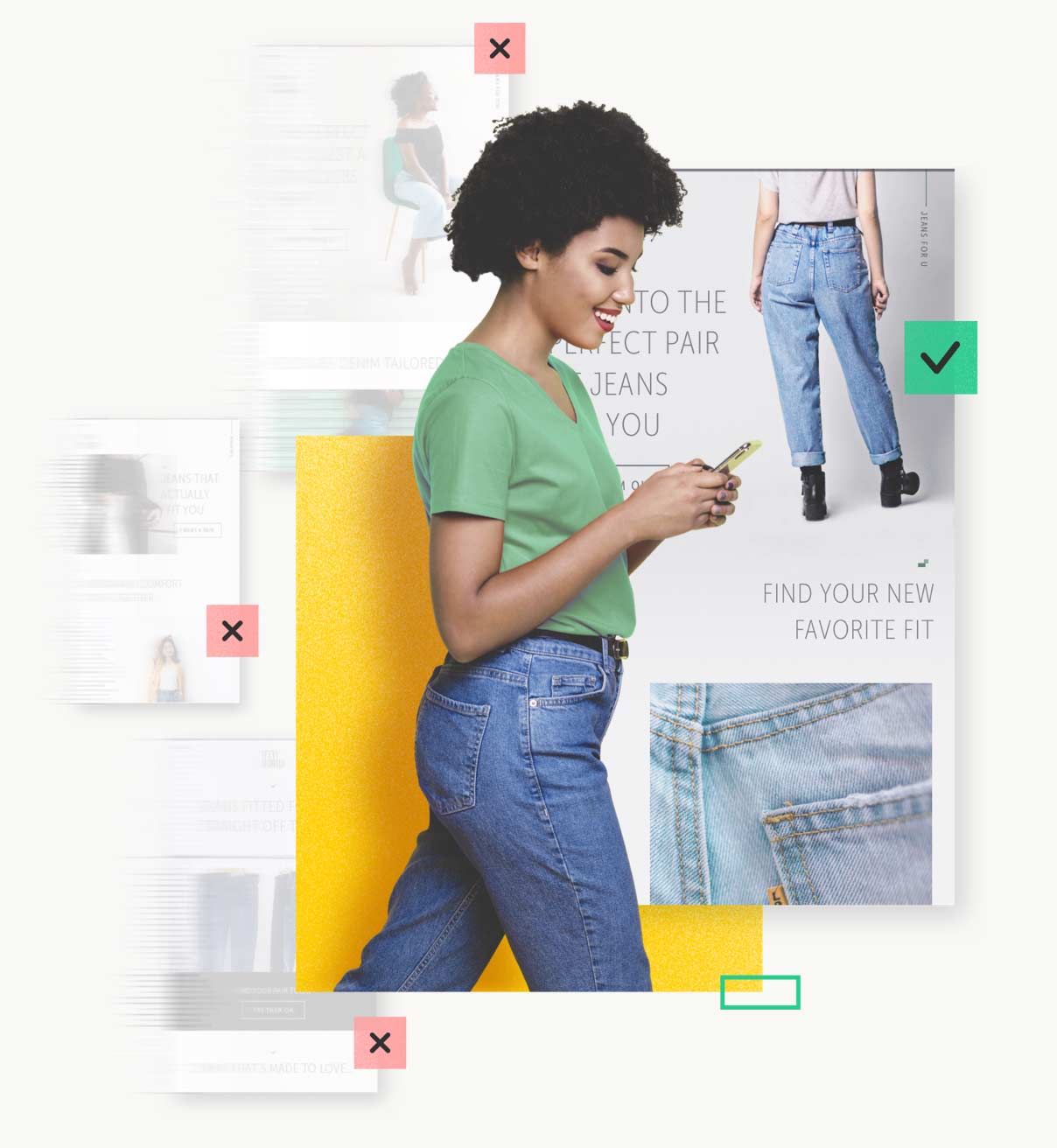Travel
LANDING PAGES: WHERE CUSTOMER JOURNEYS BEGIN
Travel
People’s journeys don’t begin at the airport. Whether they’re heading to Bali, Barcelona, or Boise, they start online. (And most often with a click.) When paired with a paid campaign, landing pages let you promote travel packages, score bookings, and deliver memorable advice that’ll keep you in mind when they plan their next vacation.
- The median conversion rate for travel pages is 3.4%, but top-performing pages will convert at 25.1% (based on the top 25th percentile).
- Landing pages for travel comprise 5% of the pages we analyzed. The insights about the industry are based on 1,882,210 conversions across 3,081 pages.
- Below, we show the performance for different types of CTAs. Simple click-throughs convert best at 9.6% but constitute only 18% of the travel pages we analyzed.
Accelerate results with simple CRO
Access the full Conversion Benchmark Report for detailed industry benchmarks, in-depth conversion rate insights, top-performing channels, and more.
Travel
A note on COVID-19. These aren’t normal times for vulnerable industries like travel. These benchmarks show what you can expect in stable periods, and they provide insights about how your visitors typically behave (and why they convert). We hope they’ll help you set up your digital campaigns for success—and inspire your rebound. If you’re facing uncertainty, though, we’d like to offer our support. Please take a look at the COVID-19 Small Business Care Package for useful resources to help lessen the impact on your business.
Travel
On travel landing pages, click-through CTAs convert at 9.6%.
What’s this mean? Click-through pages tend to be the most effective way to win conversions in travel. But since forms are often necessary, take a cue and use a clear CTA like “book now” or “learn more” (and A/B test variants with different numbers of form fields). You can also try using a click-through page to do the selling, then lead your converted visitors on a different page. How’d we get these numbers? See our methodology for more.
Travel
Adventurous travelers may
prefer easier reading.
How much does the type of travel matter to the copy that you write? Big time. Our machine learning found notable differences between how reading ease correlates with conversions for different subcategories of travel. Take a look at the graph below, which compares landing pages for adventure travel to those that primarily advertise trips within the United States.
For adventure travel, we recommend making sure your vocabulary and sentences connect with audiences at a grade 8-9 reading level. (See our methodology for a table that converts reading ease scores to grade level.) Keep it easy, in other words. Our data shows that pages above this reading level tend to see a decline in terms of conversions. This pattern is less pronounced for more general travel pages.
Landing pages for adventure travel differ in other ways as well. They tend to be longer (47%) than the travel baseline, they’re more emotional, and they generally convert better too. If your offer straddles the line between routine and adventuresome—as in, you get bookings from business execs and people who love whitewater rafting—you might want to test a variant that targets the daredevils directly with easy reading and more words.
Travel
Travel by the numbers
52%
More Surprising on Adventure Travel Pages
Landing pages in the adventure travel category tend to go big or go home, with 52% more surprise-related words and 49% more fear-related words than the travel industry baseline. (Our analysis didn’t find a correlation with conversions though.)
8%
Easier to Read with Click-Through CTAs
When the goal is a click-through, travel copywriters tend to tone down the difficulty of their language. Since click-throughs also convert more often, improved readability is a tendency we think you should apply to all your travel pages. Target a middle-school reading level.
15%
Fewer Words than Overall Baseline
Landing pages in the travel industry tend to be more concise than the overall baseline. (Maybe you let your photography do the talking?) Based on our machine learning analysis, we recommend keeping pages in this industry shorter than 300 words.
Travel
Try AI-powered landing page optimization.
Customers aren’t all the same, so sending all visitors to the same landing page variant—even the highest-performing one—isn’t always the best choice. Smart Traffic matches each visitor with the page most likely to convert. Best of all, it does it automatically.
Learn more about how Smart Traffic boosts your performance.
